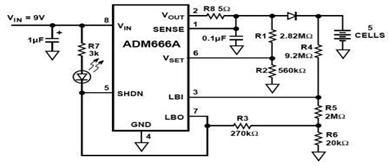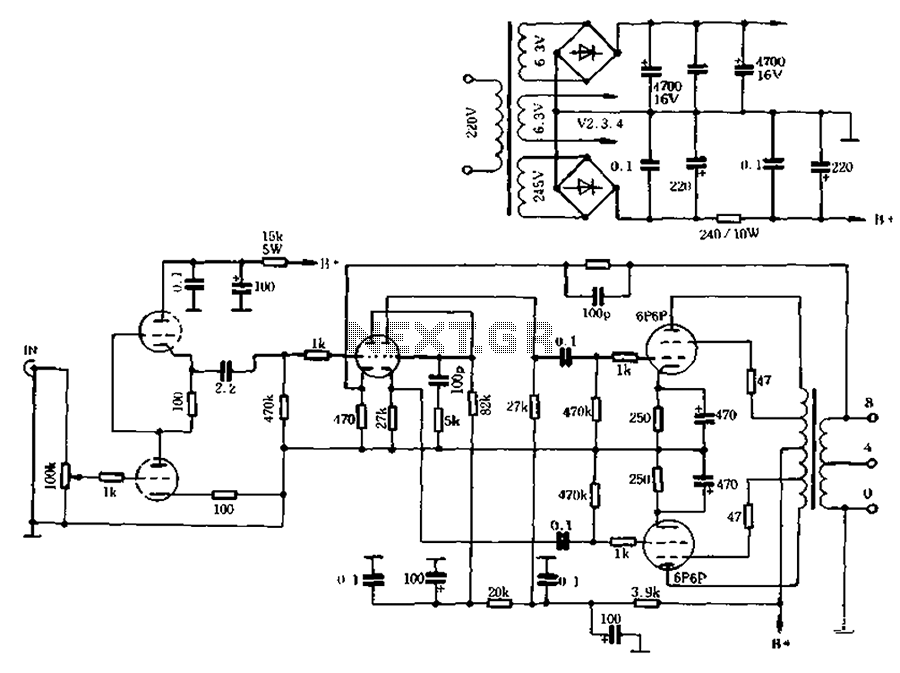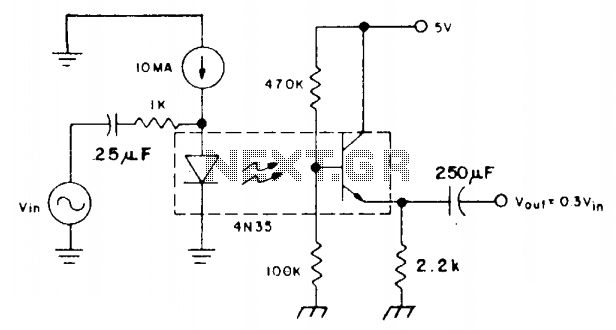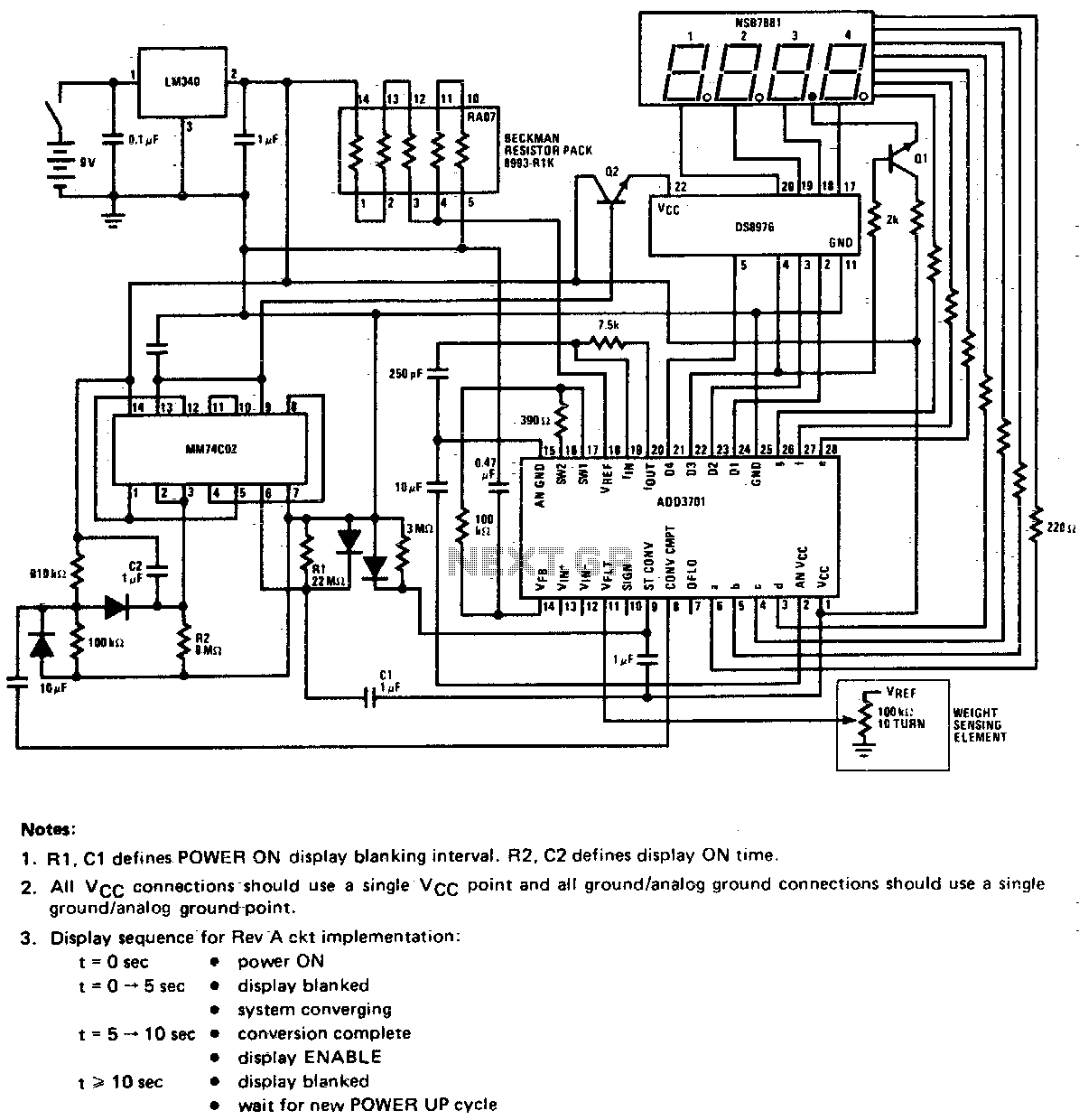
Linear scale ohmmeter
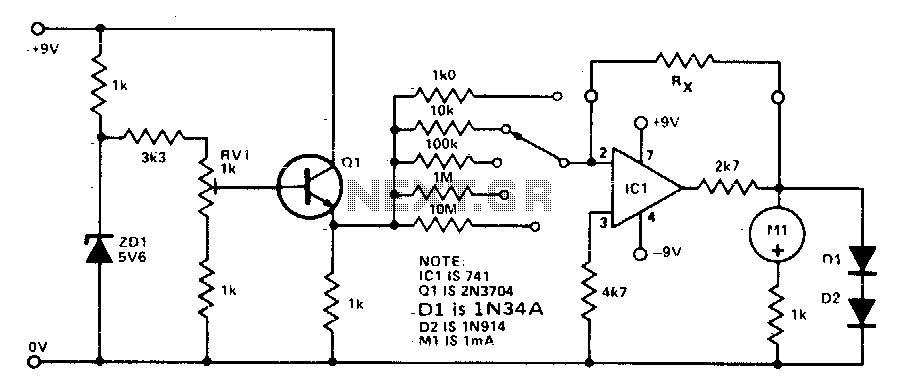
A single preset resistor is utilized across all measurement ranges, which simplifies the setup process. Diode clamping is incorporated to protect the meter from damage if the unknown resistor exceeds the selected range. When the meter is assembled, a 10 K precision resistor is positioned in the test location, R*; the meter is then set to the 10 K range, and RV1 is adjusted to achieve full-scale deflection.
The described circuit utilizes a single preset resistor to streamline the calibration process across multiple ranges. This design choice minimizes the complexity involved in adjusting the meter for different resistance values. The inclusion of diode clamping serves a critical protective function, safeguarding the meter's internal components from potential overvoltage conditions that could arise if the unknown resistor's value surpasses the selected measurement range.
Upon assembly, a 10 K precision resistor is placed in the designated test position, denoted as R*. The meter is configured to the 10 K range, allowing for accurate measurement of resistance values close to this standard. The adjustment of RV1 is crucial, as it calibrates the meter to ensure that it reads full-scale deflection when the known resistance is applied. This process not only ensures accuracy but also enhances the reliability of measurements taken with the device.
The schematic for this circuit would typically include a resistor labeled R*, the preset resistor, the variable resistor RV1, and the necessary diodes for clamping. The circuit layout should ensure that the diode connections are positioned correctly to prevent reverse current flow, thereby protecting sensitive components. Additionally, clear labeling of all components and their respective connections is essential for ease of understanding and troubleshooting during assembly or maintenance. Proper grounding and power supply connections must also be considered to ensure stable operation of the meter. Overall, the design is intended to deliver precise resistance measurements while maintaining robustness against potential electrical hazards.One preset resistor is used for all the ranges, simplifying the setting up. Diode clamping is included to prevent damage to the meter if the unknown resistor is higher than the range selected When the meter has been assembled, a 10 K precision resistor is placed in the test position, R*; the meter is set to the 10 K range and RVl is adjusted for full scale deflection. 🔗 External reference
The described circuit utilizes a single preset resistor to streamline the calibration process across multiple ranges. This design choice minimizes the complexity involved in adjusting the meter for different resistance values. The inclusion of diode clamping serves a critical protective function, safeguarding the meter's internal components from potential overvoltage conditions that could arise if the unknown resistor's value surpasses the selected measurement range.
Upon assembly, a 10 K precision resistor is placed in the designated test position, denoted as R*. The meter is configured to the 10 K range, allowing for accurate measurement of resistance values close to this standard. The adjustment of RV1 is crucial, as it calibrates the meter to ensure that it reads full-scale deflection when the known resistance is applied. This process not only ensures accuracy but also enhances the reliability of measurements taken with the device.
The schematic for this circuit would typically include a resistor labeled R*, the preset resistor, the variable resistor RV1, and the necessary diodes for clamping. The circuit layout should ensure that the diode connections are positioned correctly to prevent reverse current flow, thereby protecting sensitive components. Additionally, clear labeling of all components and their respective connections is essential for ease of understanding and troubleshooting during assembly or maintenance. Proper grounding and power supply connections must also be considered to ensure stable operation of the meter. Overall, the design is intended to deliver precise resistance measurements while maintaining robustness against potential electrical hazards.One preset resistor is used for all the ranges, simplifying the setting up. Diode clamping is included to prevent damage to the meter if the unknown resistor is higher than the range selected When the meter has been assembled, a 10 K precision resistor is placed in the test position, R*; the meter is set to the 10 K range and RVl is adjusted for full scale deflection. 🔗 External reference
